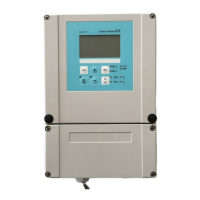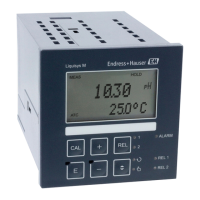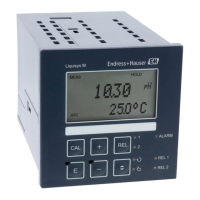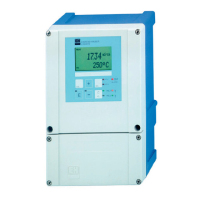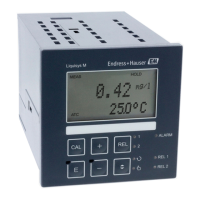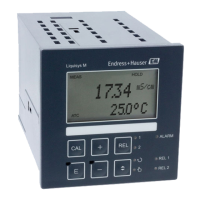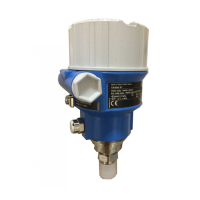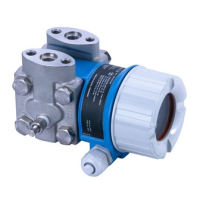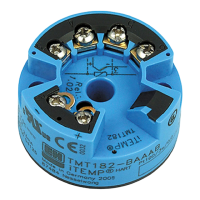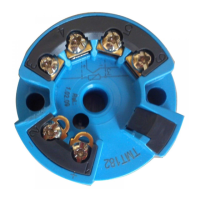What to do if the Endress+Hauser Liquisys M CUM253 Transmitter calibration is aborted?
- CCharles BrooksAug 19, 2025
If the calibration of your Endress+Hauser Transmitter is aborted, repeat the calibration process.

What to do if the Endress+Hauser Liquisys M CUM253 Transmitter calibration is aborted?
If the calibration of your Endress+Hauser Transmitter is aborted, repeat the calibration process.
What does calibration warning mean on Endress+Hauser Liquisys M CUM253?
A calibration warning on your Endress+Hauser Transmitter indicates that calibration data are within limits but deviate from standard values by a factor of more than two.
What to do if the Endress+Hauser Liquisys M CUM253 Transmitter shows an EEPROM memory error?
If your Endress+Hauser Transmitter displays an EEPROM memory error, follow these steps: 1. Switch the device off and then on again. 2. Load device software compatible with the hardware (using an optoscope). 3. Load measurement-parameter-specific device software. If the error continues, send the device to your local service organization for repair or consider replacing it.
What to do if the Endress+Hauser Liquisys M CUM253 Transmitter instrument software version is not compatible with module hardware version?
If the instrument software version of your Endress+Hauser Transmitter is not compatible with the module hardware version, load software that is compatible with the hardware. You can also load measurement-parameter-specific device software.
What to do if the Endress+Hauser Transmitter sensor or sensor connection is faulty?
If you suspect a faulty sensor or sensor connection on your Endress+Hauser Transmitter, check the sensor and its connection. Also, check the initialization of the wiper.
What to do if the Endress+Hauser Liquisys M CUM253 shows invalid configuration?
If your Endress+Hauser Transmitter shows an invalid configuration, repeat the download.
What to do if the Endress+Hauser Liquisys M CUM253 has a wiper error?
If your Endress+Hauser Transmitter is showing a wiper error, check the wiper. If necessary, use manual control to test its function.
What to do if the Endress+Hauser Transmitter measuring value is outside concentration table?
If the measuring value of your Endress+Hauser Transmitter is outside the concentration table, clean the sensor and check the table.
What to do if the Endress+Hauser Liquisys M CUM253 Transmitter measuring range is below main parameter?
If your Endress+Hauser Transmitter's measuring range is below the main parameter, check the measurement and connections. Also, check the device and measuring cable.
What to do if the Endress+Hauser Liquisys M CUM253 current output is below range 1?
If the current output of your Endress+Hauser Transmitter is below range 1, check the measured value and current assignment.
| Brand | Endress+Hauser |
|---|---|
| Model | Liquisys M CUM253 |
| Category | Transmitter |
| Language | English |
Specifies intended applications and covers product safety compliance.
Explains methods for securing the field housing, including wall and post mounting.
Lists checks to perform after installation to ensure the transmitter is undamaged and protected.
Provides wiring instructions and important notices regarding the device's power switch.
Illustrates sensor, output, and relay connections for the transmitter.
Guides on connecting instruments and sensor extension options.
Covers alarm contact configuration and essential checks after electrical installation.
Details pre-commissioning checks and the initial device power-on procedure.
Covers default settings and guides through essential configuration steps.
Explains how to configure operating modes, sensor settings, temperature, and wiper functions.
Explains the importance of calibration and the use of data records.
Guides on performing three-point calibration, correction, editing, and one-point calibration.
Explains calibrating measurements using offset and slope adjustments.
Lists system errors, their causes, remedial measures, and status information.
Helps locate and correct errors related to sensor issues, cabling, and environmental factors.
Addresses errors related to device operation, voltage, display, and internal components.
Guides on replacing the central module and re-entering device settings and serial numbers.
